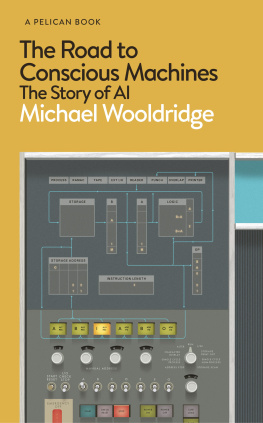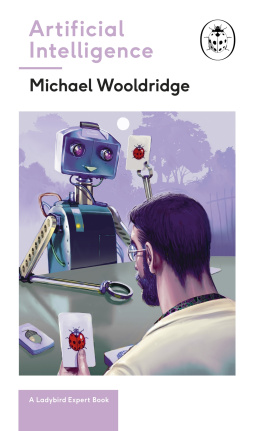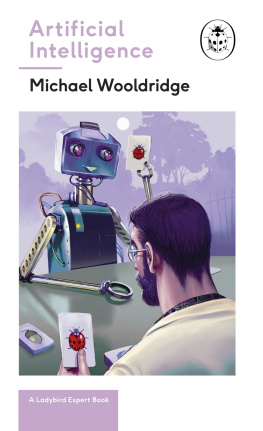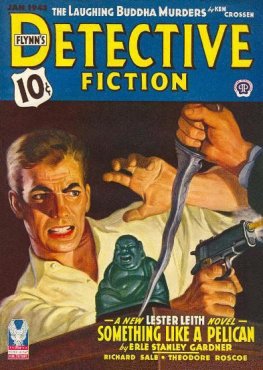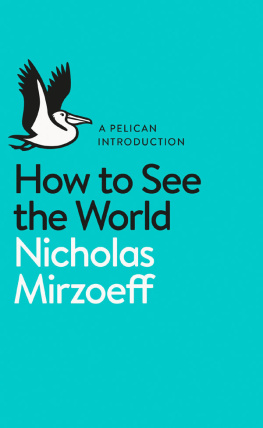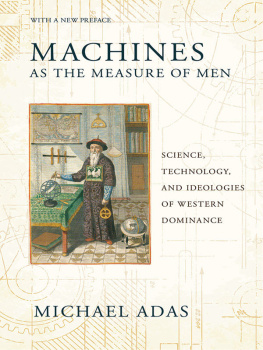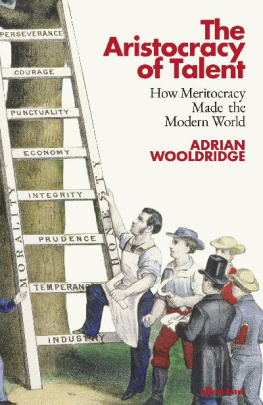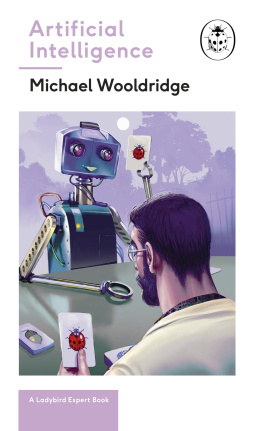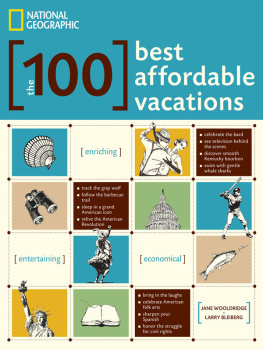Michael Wooldridge - The Road to Conscious Machines: The Story of AI (Pelican)
Here you can read online Michael Wooldridge - The Road to Conscious Machines: The Story of AI (Pelican) full text of the book (entire story) in english for free. Download pdf and epub, get meaning, cover and reviews about this ebook. year: 2018, publisher: Penguin Books Ltd, genre: Romance novel. Description of the work, (preface) as well as reviews are available. Best literature library LitArk.com created for fans of good reading and offers a wide selection of genres:
Romance novel
Science fiction
Adventure
Detective
Science
History
Home and family
Prose
Art
Politics
Computer
Non-fiction
Religion
Business
Children
Humor
Choose a favorite category and find really read worthwhile books. Enjoy immersion in the world of imagination, feel the emotions of the characters or learn something new for yourself, make an fascinating discovery.
- Book:The Road to Conscious Machines: The Story of AI (Pelican)
- Author:
- Publisher:Penguin Books Ltd
- Genre:
- Year:2018
- Rating:5 / 5
- Favourites:Add to favourites
- Your mark:
- 100
- 1
- 2
- 3
- 4
- 5
The Road to Conscious Machines: The Story of AI (Pelican): summary, description and annotation
We offer to read an annotation, description, summary or preface (depends on what the author of the book "The Road to Conscious Machines: The Story of AI (Pelican)" wrote himself). If you haven't found the necessary information about the book — write in the comments, we will try to find it.
The Road to Conscious Machines: The Story of AI (Pelican) — read online for free the complete book (whole text) full work
Below is the text of the book, divided by pages. System saving the place of the last page read, allows you to conveniently read the book "The Road to Conscious Machines: The Story of AI (Pelican)" online for free, without having to search again every time where you left off. Put a bookmark, and you can go to the page where you finished reading at any time.
Font size:
Interval:
Bookmark:
A PELICAN BOOK

PENGUIN BOOKS
UK | USA | Canada | Ireland | Australia
India | New Zealand | South Africa
Penguin Books is part of the Penguin Random House group of companies whose addresses can be found at global.penguinrandomhouse.com.

First published 2020
Text copyright Michael Wooldridge, 2020
The moral right of the author has been asserted
Cover by Matthew Young
Book design by Matthew Young
ISBN: 978-0-241-33391-4
This ebook is copyright material and must not be copied, reproduced, transferred, distributed, leased, licensed or publicly performed or used in any way except as specifically permitted in writing by the publishers, as allowed under the terms and conditions under which it was purchased or as strictly permitted by applicable copyright law. Any unauthorized distribution or use of this text may be a direct infringement of the authors and publishers rights and those responsible may be liable in law accordingly.
For the Principal, Fellows and Scholars of Hertford College in the University of Oxford
I am enormously grateful to my agent Felicity Bryan and my editor Laura Stickney for their support, encouragement and advice throughout this project. And, I should add, for their (ahem) good-natured patience.
Special thanks to: Ian J. Goodfellow, Jonathon Shlens and Christian Szegedy for their permission to use the panda/gibbon images that appear in , from their paper Explaining and Harnessing Adversarial Examples; Peter Millican for permission to adapt some material from a paper we wrote together; Subbarao Kambhampati for useful feedback on some of my main arguments, and pointing me towards Pascals wager; Nigel Shadbolt for discussion, encouragement and fantastic anecdotes about the history of AI; and Reid G. Smith for his permission to adapt some of his teaching materials relating to the MYCIN system.
I am grateful to those colleagues, students and unlucky acquaintances who read drafts of the book at short notice and gave enormously valuable feedback. Thanks here to Ani Calinescu, Tim Clement-Jones, Carl Benedikt Frey, Paul Harrenstein, Andrew Hodges, Matthias Holweg, Will Hutton, Graham May, Aida Mehonic, Peter Millican, Steve New, Andr Nilsen, James Paulin, Emma Smith, Thomas Steeples, Andr Stern, John Thornhill and Kiri Walden. Naturally, the many errors which surely remain are entirely my responsibility.
I am honoured to acknowledge the support of the European Research Council under Advanced Grant 291528, which funded me and my research group from 2012 to 2018. My work was made infinitely more productive and immensely more pleasurable by an energetic, brilliant and endlessly supportive research group led by Julian Gutierrez and Paul Harrenstein. I very much hope we will continue to collaborate far into the future.
About halfway through writing this book, I was having lunch with a colleague.
What are you working on? she asked me.
This is a standard question for academics we ask it of each other all the time. I should have been ready for it, and had an impressive answer ready to hand.
Something a bit different. Im writing a popular science introduction to artificial intelligence.
She snorted. Does the world really need yet another popular science introduction to AI? Whats the main idea then? Whats your new angle?
I was crestfallen. I needed a clever comeback. So I made a joke.
Its the story of AI through failed ideas.
She looked at me, her smile now faded. Its going to be a bloody long book, then.
Artificial intelligence (AI) is my life. I fell in love with AI as a student in the mid-1980s, and I remain passionate about it today. I love AI, not because I think it will make me rich (although that would be nice), nor because I believe it will transform our world (although, as we will see in this book, I believe it will do so, in many important ways). I love AI because it is the most endlessly fascinating subject I know of. It draws upon and contributes to an astonishing range of disciplines, including philosophy, psychology, cognitive science, neuroscience, logic, statistics, economics and robotics. And ultimately, of course, AI appeals to fundamental questions about the human condition, and our status as homo sapiens what it means to be human, and whether humans are unique.
My first main goal in this book is to tell you what AI is and, perhaps more importantly, what it is not. You might find this a little surprising, because it may seem obvious to you what AI is all about. Surely, the long-term dream of AI is to build machines that have the full range of capabilities for intelligent action that people have to build machines that are self-aware, conscious and autonomous in the same way that people like you and me are. You will probably have encountered this version of the AI dream in science-fiction movies, TV shows and books.
This version of AI may seem intuitive and obvious, but as we will see when we try to understand what it really means, we encounter many difficulties. The truth is we dont remotely understand what it is we want to create, or the mechanisms that create it in people. Moreover, it is by no means the case that there is agreement that this really is the goal of AI. In fact, it is fiercely contentious there isnt even any consensus that this kind of AI is feasible, let alone desirable.
For these reasons, this version of AI the grand dream is difficult to approach directly, and although it makes for great books, movies and video games, it isnt in the mainstream of AI research. Of course, the grand dream raises quite profound philosophical questions and we will discuss many of these in this book. But beyond these, much of what is written about this version of AI is really nothing more than speculation. Some of it is of the lunatic fringe variety AI has always attracted crackpots, charlatans and snake oil salesmen as well as brilliant scientists.
Nevertheless, the public debate on AI, and the seemingly never-ending press fascination with it, is largely fixated on the grand dream, and on alarmist dystopian scenarios that have become a weary trope when reporting on AI (AI will take all our jobs; AI will get smarter than us, and then it will be out of control; super-intelligent AI might go wrong and eliminate humanity). Much of what is published about AI in the popular press is ill-informed or irrelevant. Most of it is garbage, from a technical point of view, however entertaining it might be.
In this book, I want to change that narrative. I want to tell you about what AI actually is, what AI researchers actually work on and how they go about it. The reality of AI for the foreseeable future is very different to the grand dream. It is perhaps less immediately attention-grabbing, but it is, as I will show in this book, tremendously exciting in its own right. The mainstream of AI research today is focused around getting machines to do specific tasks which currently require human brains (and also, potentially, human bodies), and for which conventional computing techniques provide no solution. This century has witnessed important advances in this area, which is why AI is so fted at present. Automated translation tools are one example of an AI technology that was firmly in the realm of science fiction 20 years ago, which has become a practical, everyday reality within the past decade. Such tools have many limitations, but they are successfully used by millions of people across the globe every day. Within the next decade, we will see high-quality real-time spoken-word language translation, and augmented reality tools that will change the way we perceive, understand and relate to the world we live in. Driverless cars are a realistic prospect, and AI looks set to have transformative applications in healthcare, from which we will all stand to benefit: AI systems have proven to be better than people at recognizing abnormalities such as tumours on X-rays and ultrasound scans, and wearable technology, coupled with AI, has the potential to monitor our health on a continual basis, giving us advance warnings of heart disease, stress and even dementia.
Font size:
Interval:
Bookmark:
Similar books «The Road to Conscious Machines: The Story of AI (Pelican)»
Look at similar books to The Road to Conscious Machines: The Story of AI (Pelican). We have selected literature similar in name and meaning in the hope of providing readers with more options to find new, interesting, not yet read works.
Discussion, reviews of the book The Road to Conscious Machines: The Story of AI (Pelican) and just readers' own opinions. Leave your comments, write what you think about the work, its meaning or the main characters. Specify what exactly you liked and what you didn't like, and why you think so.

